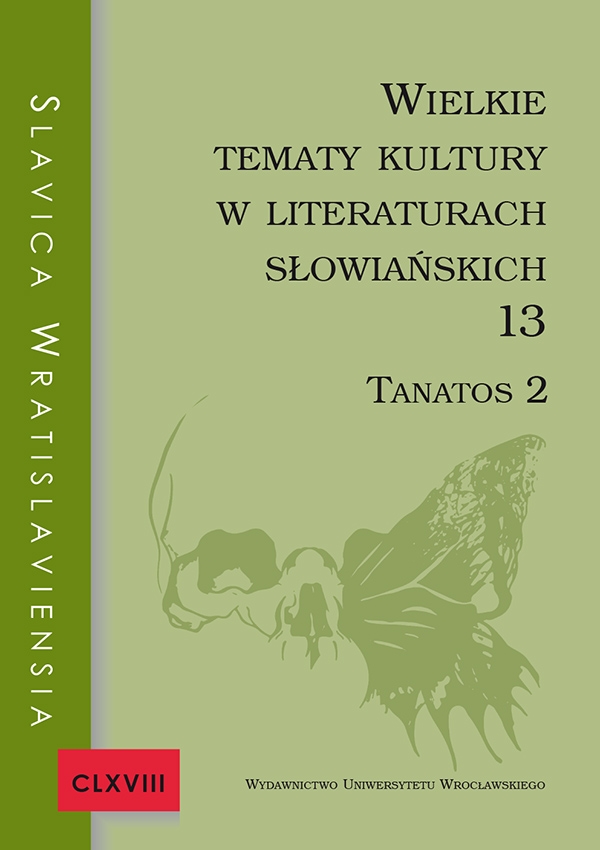

Literatury Słowiańszczyzny południowej

Mutilated autobiography: Death in the works of Milka Žicina
The aim of the article is to analyze the autobiographical works of Milka Žicina 1902–1984 in the perspective of the principles of affirmative humanities Domańska 2014. The interpretative categories for reading the author’s personal documents are the subject of death and the related concept of “border situations” Jaspers 1978. Although Žicina was a recognized writer, she published only a part of her memory prose when she was alive. The manuscript depicting the camp past staying in Glavnjača prison and in Stolac camp [1951–1955, Sve, sve, sve 2002, Сама 2009] spent many years hidden in a locker room and emerged only after the writer’s death. The record of her battle with disease breast cancer, though published in 1976, has remained unnoticed by researchers so far Записи са онколошког, 1976. Death in Žicina’s works can be perceived in several aspects: the real one, where the author’s works are reinterpreted from the perspective of contemporary literary research; the metaphorical one, in which Žicina as a former prisoner was subjected to civilian death, and simultaneously her camp testimonies were subjected to cultural death; the thematic one, as a problem in the diary, in which the author gives an account of a subjective experience of mortal illness and transforms it into a story of struggle and victory.
Autobiografia okaleczona — śmierć w twórczości Milki Žiciny
Celem artykułu jest analiza autobiograficznej twórczości Milki Žiciny 1902–1984 w perspektywie postulatów humanistyki afirmatywnej Domańska 2014. Kategorie interpretacyjne odczytania dokumentów osobistych autorki stanowią temat śmierci i związane z nim pojęcie „sytuacji granicznych” Jaspersa 1978. Žicina, choć należała do grona pisarek uznanych, za życia tylko częściowo publikowała prozę wspomnieniową. Rękopis przedstawiający przeszłość obozową pobyt w więzieniu Glavnjača oraz obozie Stolac [1951–1955 — Sve, sve, sve, 2002; Сама, 2009], wiele lat ukrywany w domowej skrytce, ukazał się dopiero po śmierci pisarki. Z kolei zapis jej choroby rak piersi, mimo publikacji w 1976 roku, w rzeczywistości dotychczas nie doczekał się zainteresowania ze strony badaczy Записи са онколошког, 1976.
Śmierć w twórczości Žiciny można rozpatrywać w obrębie kilku porządków: realnym, w którym dochodzi do reinterpretacji twórczości autorki z perspektywy współczesnych badań literackich; metaforycznym, w którym Žicina jako była więźniarka podlegała śmierci cywilnej, a wraz z nią kulturowej śmierci ulegały świadectwa obozowe; a także tematycznym — jako problem podjęty w dzienniku, w którym autorka upublicznia subiektywne doświadczenie śmiertelnej choroby i przetwarza je w historię walki i zwycięstwa.